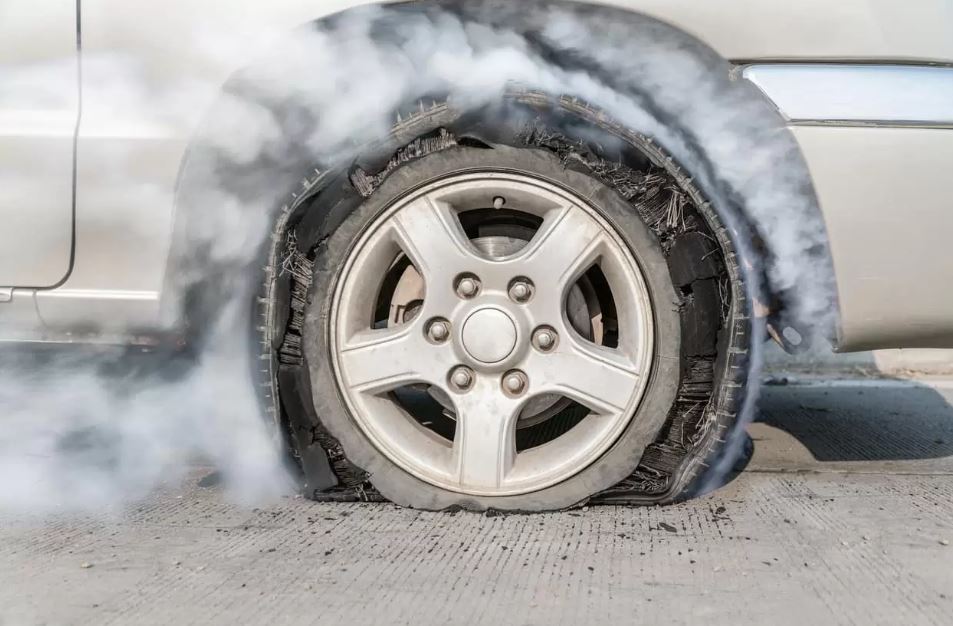Don't Let Your Engine Boil Over: A Guide to Handling Car Overheating

PS Car Removals . Follow
9 months ago
Embarking on the open road brings liberation, but car overheating can halt your journey. Suddenly, panic replaces the wind in your hair as warning lights flash on your dashboard. Fear not, fellow drivers! With knowledge and swift action, navigate this situation safely and get back on track. This content is created by Truck Removal Pinelands, offering expert insights to keep you prepared on the road.

Understanding the Overheat:
Car overheating occurs when the engine generates more heat than it can dissipate. This can be caused by various factors, including:
- Low coolant level: Coolant circulates through the engine, absorbing and transferring heat. Insufficient coolant leads to inadequate heat removal and overheating.
- Faulty radiator: The radiator is responsible for cooling the hot coolant. A malfunctioning radiator compromises its ability to dissipate heat.
- Blocked thermostat: This valve regulates coolant flow. A stuck thermostat can trap hot coolant in the engine, causing it to overheat.
- Worn-out water pump: This component circulates coolant through the engine. A failing water pump can restrict coolant flow and lead to overheating.
Recognizing the Signs:
Early detection is key to preventing major damage. Be vigilant for these signs of overheating:
- Temperature gauge: This gauge typically displays engine temperature. A reading above the normal range indicates potential overheating.
- Warning light: Most modern cars have a dedicated warning light for overheating. Don't ignore it!
- Steam from the engine bay: This is a clear visual sign of excessive heat. Pull over immediately!
- Unusual noises: Knocking or ticking sounds from the engine can indicate overheating.
Taking Action:
If you suspect your car is overheating, follow these steps promptly:
- Pull over safely: Find a safe location to stop, away from traffic. Turn off your engine immediately to avoid further damage.
- Turn on the heater: This might seem counterintuitive, but it helps draw heat away from the engine. Open windows for additional ventilation.
- Do not open the hood immediately: Pressurized hot coolant and steam can be dangerous. Wait at least 15-30 minutes for the engine to cool down before attempting to open the hood.
- Check for leaks: Once the engine is cool enough, carefully open the hood and look for visible signs of coolant leaks around the radiator, hoses, or water pump.
- Check coolant level: If safe, check the coolant level in the reservoir. If it's low, add coolant if you have some available, but never add cold water directly to a hot engine.
- Call for assistance: If you're unsure about the cause or the situation seems beyond your expertise, call for roadside assistance or a tow truck.
Remember:
- Prevention is key: Regular car maintenance, including checking coolant levels and having the cooling system inspected periodically, can help prevent overheating.
- Don't ignore warning signs: Addressing overheating promptly minimizes potential damage and costly repairs.
- Safety first: Always prioritize your safety and the safety of others. Pull over safely and avoid further driving if your car overheats.
By understanding the causes, signs, and actions to take when your car overheats, you can transform a potentially stressful situation into a manageable one. So, hit the road with confidence, knowing that you're equipped to handle unexpected hiccups like overheating and keep your journey smooth and safe.
Read More: https://pscarremoval.com.au/unwanted-car-removal/
FAQ's
-
What causes a car to overheat?
- Several factors can contribute to a car overheating, including low coolant levels, a malfunctioning thermostat, a leaking cooling system, a faulty radiator fan, or a clogged radiator. Driving in hot weather or heavy traffic can also increase the risk of overheating.
-
How do I know if my car is overheating?
- Common signs of a car overheating include the temperature gauge rising to the red zone or beyond, steam coming from the engine bay, a burning smell, or warning lights illuminating on the dashboard. If you notice any of these signs, it's essential to address the issue promptly to prevent engine damage.
-
What should I do if my car starts to overheat while driving?
- If you notice your car overheating while driving, the first step is to safely pull over to the side of the road as soon as possible. Turn off the engine and allow it to cool down before attempting to open the hood. Check the coolant level (once the engine has cooled) and look for any signs of leaks. If necessary, add coolant or water to the reservoir but avoid removing the radiator cap while the engine is still hot.
-
Can I continue driving if my car starts to overheat?
- It's not advisable to continue driving a car that is overheating, as doing so can cause severe damage to the engine. Continuing to drive with an overheating engine can lead to warped cylinder heads, blown head gaskets, or even engine failure. It's best to pull over safely and address the issue before continuing your journey.
-
How can I prevent my car from overheating in the future?
- Regular maintenance is key to preventing car overheating. Make sure to check and maintain proper coolant levels, inspect hoses and belts for signs of wear or leaks, replace the thermostat as needed, and flush the cooling system according to the manufacturer's recommendations. Additionally, avoid driving in extreme heat without adequate cooling system maintenance and keep an eye on the temperature gauge while driving in heavy traffic or towing heavy loads


